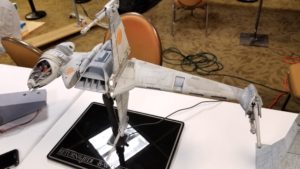
“The past is never dead. It’s not even past.” ― William Faulkner, Requiem for a Nun
William Faulkner famously struggled with the history of the South. Born and raised at a time when Civil War veterans still lived, he didn’t have to walk the battlefields at Gettysburg in order to be able to write his stirring piece on how those days in 1863 have never left us. But once the people who lived during significant events have passed into that same history, no longer to tell their stories, we have to find other ways to touch the past.
Recently, I was made aware that the Mariner’s Museum in Newport News, Virginia, the home of the restoration of the USS Monitor turret and other recovered artifacts, was giving tours of the facilities and the turret itself. See, the turret is kept in a tank filled with water the majority of the time, fresh water and a slight electrical current leech the accumulated salt from metal that spent 140 years on the bottom of the Atlantic. Once I heard of the tours, I made plans, borrowed a car, and drove south on a Thursday afternoon.
The USS Monitor had a short lifespan, yet was a truly revolutionary ship. After careful perusal, I can actually recommend the Wikipedia article on her as a good source for her history during the Civil War, and post recovery in 2002. I’ve read a lot about the Monitor during years of model building, general historical curiosity, and research for my New York Times pieces, so I was well versed in her past when I arrived at the museum on Friday morning. I was greeted by Hannah, who took me through the initial Monitor related exhibits. These artifacts include, among many other items, a busted Dahlgren cannon fired from the CSS Virginia, and a full-sized partial depiction of the Virginia herself. Several preserved artifacts recovered from the Monitor’s wreck are displayed, the most impressive of which is the red signal lantern at the top of this entry. The red lantern, the distress signal the Monitor raised on New Years Eve in 1862, was the last thing anyone ever saw of her as she sank. 140 year later, it was also the first thing found of her wreck, spotted laying on the ocean floor, literally rolling in the sand and current, several hundred yards from Monitor herself. Continue reading →
 Wonderfest is a sci-fi and fantasy model show that happens every year, just after Memorial Day, in Louisville, KY. This was my second year in attendance. Once again, the talent on display was amazing and humbling. I’ve posted my photos here:
Wonderfest is a sci-fi and fantasy model show that happens every year, just after Memorial Day, in Louisville, KY. This was my second year in attendance. Once again, the talent on display was amazing and humbling. I’ve posted my photos here:







